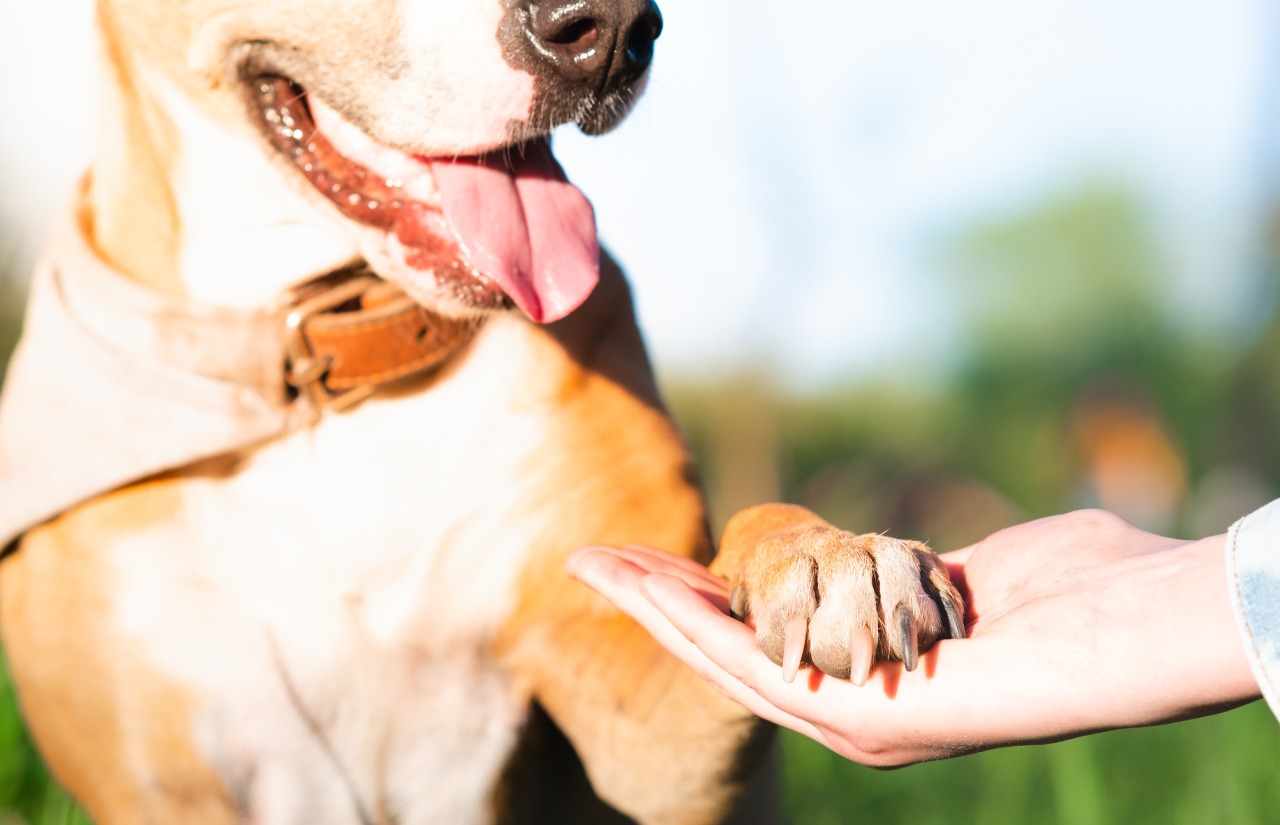Every dog parent has wondered at some point: if my furry friend were a human, how old would they be? Most of us have heard the old “one dog year equals seven human years,” but did you know it’s a bit more nuanced than that? Different breeds and sizes age at varied rates. Dive into this guide to unlock the mysteries of your pup’s age in human years. And guess what? You can also try our nifty dog-to-human age calculator right at the start!
Table of Contents
Introducing the Dog Age Calculator
The Myth of the Seven-Year Rule
Breed-Specific Ageing
Understanding Size Differences in Ageing
Tips to Keep Your Dog Youthful
Frequently Asked Questions
Introducing the Dog Age Calculator
Wondering how old your doggo is in human years? Look no further! With our calculator, discover your pup’s age by just selecting their breed size and inputting their age. It’s as simple as giving them a belly rub. Let’s fetch that age!
Dog Age Calculator
Navigating through the myriad of questions like “how old is my dog in human years?” or pondering over “how many dog years is one human year?” can be a delightful yet puzzling journey. Our dog age calculator is designed to simplify this journey, providing you with a seamless way to understand your furry friend’s age in human terms. By utilizing this dog calculator for age, you can effortlessly bridge the gap between canine and human years, ensuring that you’re well-versed in your pet’s life stage and can cater to their needs accordingly.
Now that we’ve introduced you to the marvels of the dog age calculator, it’s essential to debunk a commonly held myth about our canine companions. Let’s tackle the age-old saying that has dog lovers everywhere doing math on their fingers.
The Myth of the Seven-Year Rule
Where Did It Come From?
Many of us grew up with the belief that every dog year is equivalent to seven human years. But where did this tidbit originate? Historians believe this idea has roots going back centuries, with people trying to correlate the canine lifespan to ours. The math seemed simple: dogs lived about 10 years, humans lived about 70, thus, the seven-year rule.
Why It Doesn’t Quite Bark Up The Right Tree
While the seven-year theory is a good rough estimate, it isn’t accurate. Dogs, especially during their younger years, age faster than humans. Furthermore, size and breed greatly influence their aging process. That means our mini furballs and gentle giants don’t age at the same rate.
The myth that “one dog year equals seven human years” has been a staple in our understanding of canine aging for quite some time. However, as we delve into the intricacies of how many years a dog year truly represents, it becomes evident that this rule is far too generalized. The question “how many dog years is one human year?” cannot be answered with a simple numerical value due to the diverse aging patterns observed among different breeds and sizes of dogs. Thus, debunking this myth is pivotal in fostering a more accurate understanding of our pets’ aging process.
With the seven-year myth laid to rest, understanding the unique aging processes of different breeds becomes crucial. Our dog age calculator accounts for these variations. Let’s dive deeper into why breeds matter in dog aging.
Breed-Specific Ageing
The Importance of Genetics
Just as genetics play a pivotal role in human aging, the same goes for our dogs. Certain breeds are predisposed to age-related diseases, while others tend to age more gracefully. This breed-specific variance makes a one-size-fits-all age calculation a bit ruff around the edges.
Algorithm Behind Our Calculator
The Dog Age Calculator considers not just the breed, but the size of the dog, which is often a crucial factor in determining how a dog ages. Here’s a quick tail-wagging overview of our algorithm:
- Small Breeds (up to 20lbs): The first 2 years equate to 12 human years each. Every subsequent year is 4 human years.
- Medium Breeds (20-60lbs): The first 2 years are equivalent to 10.5 human years each, with every year after that counting as 4 human years.
- Large Breeds (over 60lbs): The first 2 years are 9 human years each, and every following year is 5 human years.
This algorithm sheds light on why the age-old adage of “one dog year equals seven human years” is a bit too simplistic. It’s vital to account for the size and sometimes even the specific breed of the dog to get a more accurate conversion.
A Spotlight on Some Popular Breeds
Golden Retrievers, for instance, are considered seniors by the age of 8, while Dachshunds are still jumping into their senior years even at 12. On the other hand, a Great Dane might show signs of ageing as early as 6! This highlights the importance of understanding breed-specific ageing nuances.
When exploring the concept of “dog years to human years”, it’s imperative to consider the breed-specific factors that influence aging. The query “how old is a dog in human years?” cannot be accurately addressed without acknowledging the genetic predispositions and unique aging patterns of different breeds. From the sprightly Dachshund to the majestic Great Dane, each breed embarks on its own distinctive aging journey, making a universal dog-to-human age conversion quite complex and necessitating a more nuanced approach.
As fascinating as breed differences are, size also plays a pivotal role in how our pets age. Thanks to tools like the dog age calculator, we can appreciate these differences. Read on to grasp the age variations due to size.
Understanding Size Differences in Ageing
The Mystery of Why Small Dogs Live Longer
Ever noticed how your tiny Chihuahua seems ageless while your neighbor’s Mastiff seems to grow grey hairs in no time? Scientists believe that the rapid growth of larger breeds might lead to a quicker ageing process. In contrast, smaller breeds age slower after their initial rapid puppy growth.
Breaking Down Ageing by Size
While each dog is unique, here’s a general paw-spective on how different sized breeds age:
- Small Breeds: Think of them as the forever young teens, ageing slower after their rapid puppy years.
- Medium Breeds: They’re the middle ground, aligning closer to the general seven-year rule, but with exceptions.
- Large Breeds: Our gentle giants tend to age faster, moving into their golden years a bit quicker.
The mystery of “how many human years do dogs live” and “how many dog years” equate to human years often intertwines with the size of the breed. Small breeds often defy the conventional “dog years to human years” conversion with their typically longer lifespans, while larger breeds tend to age more rapidly. Thus, understanding the size-related nuances in aging is crucial to accurately determining how old your petite Chihuahua or colossal Mastiff is in human years, ensuring that you can adapt their care to each life stage appropriately.
Knowing the nuances in the aging process based on size can be enlightening. And while the dog age calculator offers insights into age, keeping our furry friends youthful is every pet owner’s dream. Here are some tips to keep your pooch feeling young and sprightly.
Tips to Keep Your Dog Youthful
Diet and Nutrition
Feed them high-quality, nutritious dog food. Proper nutrition can be a fountain of youth for dogs, keeping them lively and wagging.
Regular Exercise
Keep them active! Whether it’s a game of fetch or a leisurely walk, regular exercise can keep your pup’s tail wagging energetically.
Regular Vet Check-ups
Vet visits aren’t just for when they’re feeling paw-ly. Regular check-ups can spot potential health issues early on, ensuring more doggy kisses for years to come.
In the quest to keep our dogs youthful and vibrant, understanding “how old is my dog in human years” becomes crucial in adapting their care routine. Implementing a balanced diet, regular exercise, and consistent vet check-ups not only enhances their quality of life but also allows us to navigate through the various stages of their life with ease. The dog calculator for age becomes a valuable tool in this endeavor, ensuring that we are always in tune with our dog’s age and the changing needs that come with it.
By implementing these tips, your furry friend will not only feel youthful but will lead a healthier life. But, you might still have questions. Using the dog age calculator and our next section, we aim to address some common queries.
Frequently Asked Questions
Why does breed influence ageing?
Different breeds have different lifespans and predispositions to health conditions, all of which influence how quickly they age.
How can I ensure my dog lives a long, healthy life?
Give them a balanced diet, ensure regular exercise, offer plenty of love, and never skip those vet appointments!
My dog is a mixed breed. How can I estimate their age in human years?
If you’re unsure of your dog’s primary breed, the best bet is to go by their size or use our calculator for a general estimate.
With the answers to these common questions and the dog age calculator at your fingertips, you’re well-equipped to understand and cherish every moment with your canine companion.
We’ve aimed to address some of the most common inquiries, such as “how many years is a dog year” and “how old is a dog in human years”, to provide you with a comprehensive understanding of your dog’s aging process. The complexities of converting dog years to human years necessitate a thorough exploration, and we hope that with the insights provided, you’re better equipped to appreciate and navigate through every stage of your furry friend’s life, ensuring a journey filled with joy, health, and countless tail wags.
Ageing, be it for humans or our four-legged companions, is a beautiful journey. Every grey muzzle and every playful bark carries stories of love, adventures, and countless tail wags. So, the next time you look into your dog’s wise eyes, remember: it’s not about counting the years, but making the years count.

